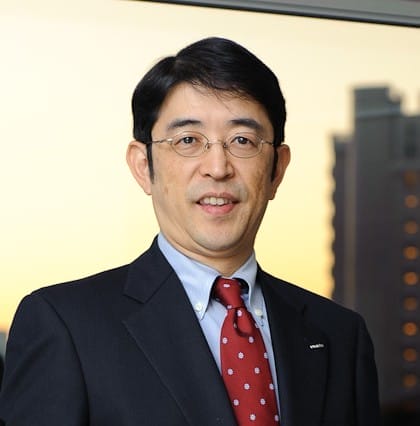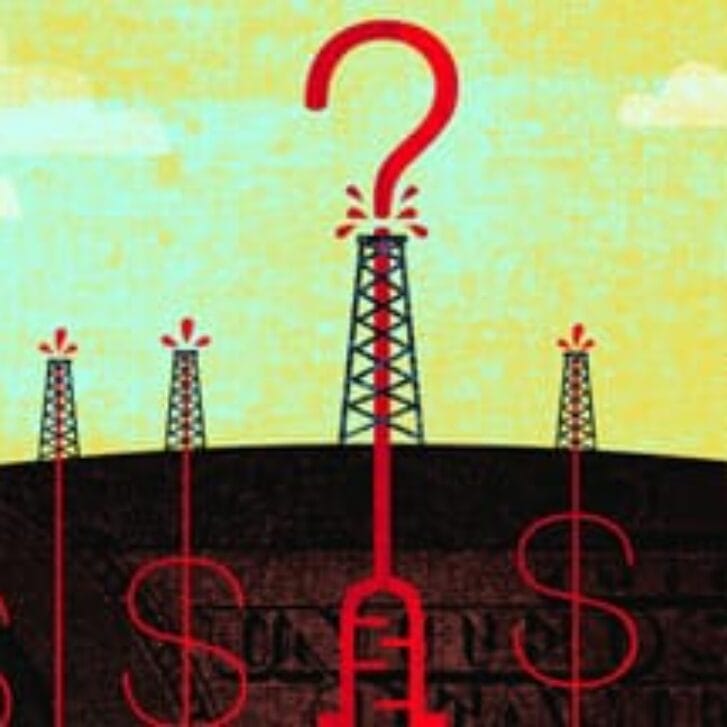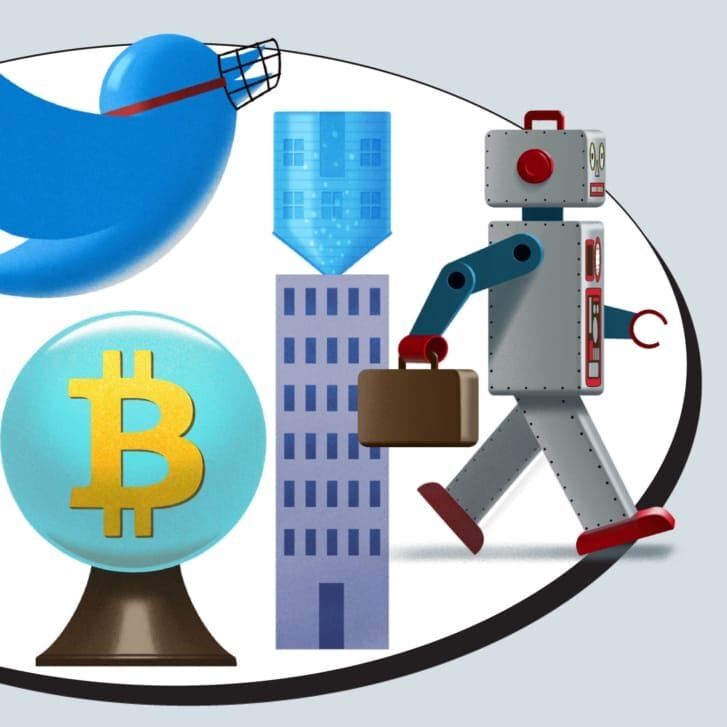It was a learning experience that corporate leaders in Japan may never live through again. As in any crisis, some leaders proved their mettle when faced with the unique challenges presented by the earthquake and tsunami that struck Tohoku, Japan, on March 11, 2011, According to Junichi Endo, WG’93, such leadership could be found at Nissan Motor Co. Ltd.
“Nissan made the earthquake recovery its No. 1 global priority,” says Endo, who currently serves as CEO and president of NMKV, a new car company jointly owned by Nissan and Mitsubishi. “It reassigned all required staff to the task and suspended many projects to secure the soonest possible recovery.”
The car company assigned the task of recovery to three senior executives and let them do their job with minimal oversight or interference from executive management, according to Endo. Nissan also brought all of its supply chain management teams from overseas plants to Japan for real-time assessment of the situation and to faciliate communication. One of the company’s bolder steps was to adopt a “push” approach to production; it analyzed the damage to its supplier network, cataloged what parts were still available, and made decisions on what cars to produce based on “reasoned and rational judgments,” says Endo, who also serves as a member of Wharton’s Executive Board for Asia.
“This ensured we maintained pressure on the supply chain, and it also maintained cash flow to suppliers. It also ensured we kept dealers stocked and their cash flow healthy,” he says.
Of course, we are not here to pick winners and losers after the earthquake. Instead, we are here to learn from both the mistakes and the successes of all entrprises that were impacted. And after all, despite the best efforts of Nissan and other automakers in Japan and elsewhere, the earthquake and its aftermath had traumatic consequences.
Vince Sheehy, WG’85, the president of Sheehy Auto Stores, saw his sources of inventory slip away in the months after the earthquake and tsunami. He watched as first one, then another, then another supply chain for the some of the most famous names in the automotive world faltered, then cracked wide open.
Shipments from one luxury automaker dropped by about 75 percent during the subsequent three months, says Sheehy, who operates 15 retail automotive franchises in 19 locations in Maryland and Virginia. Three other brand-name automakers shared similar fates.
“We were pretty decimated in terms of the inventory that we received,” he adds.
Sales slumped by 50 percent for months. Sheehy doesn’t expect most of these brands to recover their inventories until early this year.
“I imagine this will be one of the greatest learning experiences for supply chain management that we have ever had in automotive,” Sheehy says.
The 9.0-magnitude quake has impacted many more industries and will continue to be felt in supply chain management, in practice and in theory, for coming years.
The temblor and subsequent tsunami in Japan killed an estimated 15,828 people, damaged and destroyed 125,000 buildings and caused economic damages estimated by the World Bank to be at least $225 billion. Japan has for decades been viewed as a top-quality producer of parts for the automotive and the electronics industries, and the devastation that struck that country had a global impact, financially and emotionally.
“Obviously, globalization of supply chains has been going on for a long time, and of course that is one of the reasons why this quake has been so devastating because most industries today depend on the proper functioning of a global supply chain,” says Morris Cohen, the Panasonic Professor of Manufacturing Logistics in the Operations and Information Management Department at Wharton.
The devastation to the supply chain was unavoidable. No one, according to Sheehy, Cohen and others we spoke with, could have predicted that this natural disaster would strike when it did. Nor could any management expert have been able to implement adequate supply chain risk management techniques or create a theory for a global supply network that has greatly increased in size and intricacy during the past two decades.
Compounding the problem is that many supply chains have been based on only one supplier—so-called single-sourced parts. This was the main problem, in fact, after the Tohoku event, according to Endo, who spent many of his 27 years in the auto industry at Nissan, working in supply chain management then as a senior vice president of sales and global aftersales.
Adding to the challenge for almost every industry is the speed at which this global network continues to grow. While daunting, that rapid progress also provides a stimulus for some intriguing paths forward for innovations across every industry.
Energy and Vision
What happened in Japan and how it affected various industries is still being dissected, but some things are already clear.
One is that the energy grid for key products manufacturers and suppliers was wrecked and has still not completely recovered. As late as September 2011, 13 percent of Japan’s total electrical generating capacity was still offline. In the most affected areas, that number was closer to 25 percent.
David Jacoby, WG’89, CEO of Boston Strategies International, which consults with the energy industry and other sectors on supply chain management, says the lessons learned in Japan about power supplies in a crisis are being acted upon and will be carried forward.
“The Japanese companies we have been looking at implemented a variety of measures to conserve power during that period,” Jacoby says.
Select measures, such as moving noncritical functions like performance testing to evenings and weekends and restricting the use of air conditioning and other nonessentials, are tactical short-term solutions to the energy dilemma.
“What they did as a short-term move was sort of real quickly put in a smarter grid using less power, but they did it in very rudimentary ways,” Jacoby says.
What’s coming, he argues, is more general use of a smart grid in which electronic distribution and control equipment are being automated and digitally equipped to monitor and control energy flows. Plant operators will be able to track disruptions to their electricity system in real time and manipulate their system to either pick up alternate supplies of electricity or divert electricity to the parts of their system where it is most critically needed.
In post-quake Japan, many manufacturers scrambled to assemble whatever power source they could.
“We saw this big surge of need for generator systems and uninterruptable power systems and batteries and things like that during this period,” he says.
The energy supply chain that Jacoby is describing is being developed to avoid this need. Of course, not all contingencies are predictable, but it is wise to invest in outcomes that will protect the supply chain.
“If your steam turbine starts to wobble, it creates a variability of power output, and that variability will get transmitted through a whole series of steps in your electricity supply chain,” Jacoby explains.
Creating better data security is also a focus of this effort because the same process that creates improved security in an electric grid can also result in the loss of valuable data if the controlling computer system gets hacked.
Jacoby isn’t just focusing on energy for energy’s sake. He sees management of the energy supply chain and the products supply chain being sister disciplines to the study of information theory. That being the study of an assembly of bits on one end and the disassembly and ingestion of those bits on the other.
“The whole principle of aggregation and disaggregation and making that happen smoothly is essentially what supply chain management is all about,” he says.
The Product Supply Chain
The other clear lesson from Tohoku is that, beforehand, visibility into the first tier of manufacturers’ supply chains was generally good, but visibility into the second and third tiers of many supply chains—the suppliers that supply the original equipment manufacturers (OEMs)—was in many cases inadequate.
Sheehy tells the story of Japanese auto manufacturing employees being sent out on the road after the quake to identify and locate second- and third-tier suppliers to see if they still existed.
“My understanding is that one manufacturer had 800,000 parts that they had to locate in Japan, and they had to farm people out to locate all 800,000 of those parts,” he says.
Measured in time and labor, piecing together a broken supply chain of that magnitude can be extremely costly.
But the investment required to create better visibility into the second and third tiers of supply chains can also be expensive.
Endo credits Nissan’s relationships with first-suppliers as “critical” for its recovery, but he suggests that the automaker needs to do even more to assist its primary suppliers to better understand their own tier-1 vendors.
Another effort to secure a supply chain involves avoiding single-sourced parts altogether. In the auto industry, for example, this could involve moving from specialized parts for specifically designed vehicles to parts that can be used by every vehicle in production.
“We need to progress our strategy of developing common platforms manufactured globally to ensure we have alternative supply options for the vast majority of our parts and materials,” Endo explains.
Enterprises could also invest in additional slack in their supply chains.
“We all know about stock options, and there is something called real options—companies making investments in resources, be they facilities or products or people, that they want to use in certain contingencies,” Cohen says.
Examples of such options in a products supply chain might be investments in an additional warehouse to ensure adequate inventory from a particular supplier or investing in redesigning a product so a particular single-source material isn’t needed.
From the Top
Deciding where to make the proper investments to secure a supply chain can be complicated and requires astute management
That’s because there is a natural tension between those who purchase such things as energy and supplies— the procurement arm—and those charged with avoiding losses—the risk management function. The two departments don’t necessarily share the same priorities. Ideally, ownership of supply chain management would reside in various departments, with the responsibility for making the appropriate decisions ultimately residing with senior management. According to David Mounts, WG ’04, the CEO of Winston-Salem, N.C.-based Inmar Corp, that doesn’t happen as often as it should.
“It has to come from the top, but in most cases it doesn’t,” Mounts says.
Mounts previously served as an executive vice president of supply chain and chief financial officer for Domino’s Pizza Inc. His current company offers supply chain management consulting and other services.
Mounts says coordination between risk management and procurement is a key task in supply chain management. Procurement managers aren’t usually trained in risk management, Mounts says, nor do they tend to feel empowered to make risk assessments. Often, they’re just looking for the best value.
That’s where senior management needs to step in and make sure that the cost of a possible break in the supply chain is weighed against the investment required to defend against that break.
That risk assessment, according to Gérard Cachon, the Fred R. Sullivan Professor of Operations and Information Management at Wharton, may result in a decision to make changes with existing suppliers or bring in new suppliers.
“Both are costly,” Cachon says.
Vision and Relationships
Another way to decrease supply chain risk is through a new attitude about suppliers and about relationships with suppliers. This new model focuses more on ensuring that key suppliers are stakeholders not only for the purpose of securing the supply chain, but also as partners in the innovation of product development.
Mounts recalls his time at Domino’s Pizza when the company, facing poor feedback on the taste of its pizza, set about launching a new product. As head of the food and supply chain operation, Mounts was part of an effort that brought in the company’s key suppliers to get their input on improving the product. Those partners were told they were with Domino’s for the long haul and their advice was needed to help the company improve its pizza.
“Ultimately, the decision rested with us on all of the different options that we tried, but we would never have gotten to the outcome we did without their support,” Mounts says.
The goal of improving supply chain security was also part of that discussion, Mounts adds.
“To get to that level of partnership and to get a partner to invest in that type of a relationship and in longer-term results for those key partners, you have to throw the ‘Procurement 101’ handbook out the window,” Mounts says.
That handbook says, for instance, that you take your business out to bid every one or two years.
“Well, that is just silly for strategic partners that you want investing in innovation and aligning with you in your goals,” Mounts says. “What I see is that too many companies blindly run everything through a one-size fits all procurement process, and that is bad supply chain management.”
Although more companies should be closer to this model, Mounts believes, the barriers to attaining it are not formidable. Success really requires a mindset on the part of senior management to meet with suppliers; communicate the company’s strategy, risk concerns and long-range goals; and rate the suppliers on how well they respond to that meeting. After that rating has occurred, the decision on which suppliers to keep is then shifted to the C-suite.
Strength and Flexibility
Cohen’s related perspective is that we are moving from a supply chain theory that values speed and affordability to one that values strength and flexibility.
“If we could produce things cheaply, we could move things cheaply, and if we could move things cheaply and quickly, then that was sufficient,” is how Cohen describes the old way of doing things. “Now, we have seen that agility and flexibility and responsiveness are becoming really important, especially in response to random shocks.”
This new focus on supply chains was only advanced by the scrutiny that the Tohoku quake and tsunami brought to the issue, according to Jacoby.
“I would say that a large multinational that has not implemented a multitier supplier management program is a laggard,” Jacoby says.
Traditionally, enterprises have managed those supplier relationships through contracts that dictate that first-tier suppliers inform end users when there is a material threat to their supply. Those contracts may also stipulate that the first-tier supplier provide transparency on the second- and third-tier suppliers to the end user.
Jacoby, Cohen and Mounts also operate companies that offer clients access to technology to run procurement scenarios or product-recall drills, modeling tools that can help companies create greater visibility into their supply chain vulnerabilities and choose suppliers that provide them the best combination of product value, price and supply chain security.
“We use these different probabilistic approaches and scenarios to help our clients determine what the best way to work with their suppliers is, to make sure that they get value,” Jacoby says.
Boston Strategies International recently helped a major oil company deduce the optimal number of suppliers for procurement contracts worth hundreds of millions of dollars, as well as the optimal contract term and geographic distribution of supply that minimizes overall risk and total cost. The consultancy is also helping a wind-power company decide the best number of suppliers for wind turbines and related capital assets for a large wind farm project, taking into account uncertainties about the future evolution of technology, supply market capacity and lead times.
The Mother of Invention
Then again, increasingly interwoven global supply chains and the Tohoku quake in Japan have made it apparent that current tools, even the more sophisticated ones, aren’t sufficient.
“The use of more complex tools would require globally integrated systems,” Endo explains. “Nissan, in common with many large businesses, does not possess such highly integrated systems.”
One solution going forward, according to Mounts, is in the clouds. Cloud computing has the potential to create the real-time visibility that many links in the global supply chain currently lack. Where supply chains frequently break down, Mounts says, is over a lack of standards. Different producers describe parts with different names, and it can become very difficult to tell what is what.
“Let’s all talk the same language first, and then let’s all agree on the library where all of the language is going to be,” Mounts says.
With more companies moving to the cloud, it will be necessary to comply with standards to integrate and participate with other cloud partners and suppliers.
“The other enabler that I think is huge is social commerce,” Mounts says.
LinkedIn is an early example of this, where professionals in the financial services and other industries have come together in forums to discuss the best ways to innovate either in operations or customer service.
“Imagine, for example, that you had five tiers of supplier for a particular product and it is sold to 100 retailers and you could have a social platform where all of those folks are connected real time with everything that is happening to the product everywhere in the world at that stage. You will be able to provide everybody the same visibility at the same time,” Mounts says.
He estimates that it will take five years for the data and the know-how for this type of risk assessment to become available.
Sheehy believes that the science of supply chains has already been inexorably altered.
“I think what you will see going forward is a much more precise understanding of what the entire comprehensive supplier system looks like, so that visibility will be there going forward,” he says.
In his view, automakers that were directly impacted by the Japan quake and tsunami have already done the heavy lifting to ensure that they have complete visibility into the second and third tiers of their supply chain.
“I don’t think they would ever let the situation develop again where they don’t precisely know how to track down the source of each part,” he says. Competitors that weren’t as heavily impacted, on the other hand, may still be in the process of gaining that knowledge.
Sheehy also sees that manufacturers are providing much more detailed information in a much more timely fashion to their retailers—about production cuts or delays in the delivery of a particular part. That’s a direct result of the lessons learned from Tokohu.
“A year ago we would never have gotten this kind of information,” he says.
Then again, as Tohoku proved, companies in crisis mode differentiate themselves not by systems and information alone. It also takes leadership.
“The management of emergencies requires agility and rapid decision-making, not complex software,” Endo says.


























